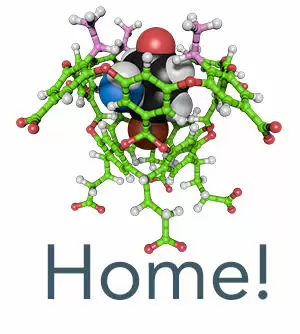Gibb, B. C. Hard Luck Scheele. Nature Chemistry 2015, 7, 855–856.
Publications by Year: 2015
2015
Gibb, B. C. The organic Solar System. Nature Chemistry 2015, 7, 364-365.
Gibb, B. C. A chemist’s guide to the solar system. Nature Chemistry 2015, 91-92.
Gibb, C.; . Thermodynamic Profiles of Salt Effects on a Host–Guest System: New Insight into the Hofmeister Effect. The Journal of Physical Chemistry B 2015, 119, 5624-5638.
Sullivan, M. R.; Gibb, B. C. Differentiation of small alkane and alkyl halide constitutional isomers via encapsulation. Org. Biomol. Chem. 2015, 13, 1869-1877.
Previously we have demonstrated that host 1 is capable of hydrocarbon gas separation by selective sequestration of butane from a mixture with propane in the headspace above a solution of the host (C. L. D. Gibb, B. C. Gibb, J. Am. Chem. Soc., 2006, 128, 16498–16499). Expanding on the idea of using this host as a means to affect guest discrimination, we report here on NMR studies of the binding of constitutional isomers of two classes of small molecules: hexanes and chloropentanes. Our results indicate that even with these relatively straightforward classes of molecules, guest binding is complicated. Overall, host 1 displays a preference to bind guests with a X–C(R2)–C(R2)–Me (X = Cl or Me) structure, and more generally, a preference for branched guests rather than highly flexible, unbranched derivatives. The complexity of binding of these isomers is magnified when considering molecular differentiation between pairs of guests. In such cases, different guests demonstrated different propensities to self-sort; some self-sort exclusively, while others show very little propensity to do so. However, whereas the pool of guests reveals some general correlations between binding strength and structure, no obvious relationship between structure and degree of self-sorting was observed.
Jordan, J. H.; Gibb, B. C. Molecular containers assembled through the hydrophobic effect. Chem. Soc. Rev. 2015, 44, 547-585.
This review focuses on molecular containers formed by assembly processes driven by the hydrophobic effect, and summarizes the progress made in the field over the last ten years. This small but growing facet of supramolecular chemistry discusses three classes of molecules used by researchers to investigate how self-assembly can be applied to form discrete, mono-dispersed, and structurally well-defined supramolecular entities. The approaches demonstrate the importance of preorganization of arrays of rigid moieties to define a specific form predisposed to bind, fold, or assemble. As the examples demonstrate, studying these systems and their properties is teaching us how to control supramolecular chemistry in water, shedding light on aspects of aqueous solutions chemistry, and illustrating novel applications that harness the unique properties of the hydrophobic effect.

